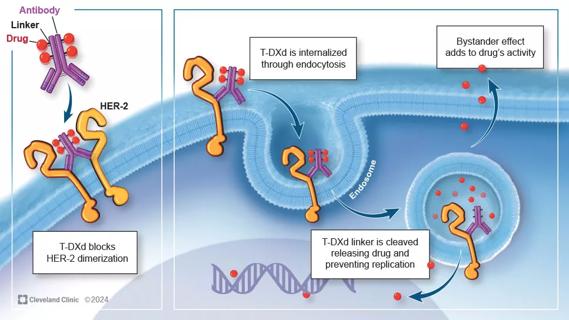Tool helps predict and prevent falls

Luann Capone, MSN, MPA, RN, GNP-BC, has spent the last decade researching falls in cancer patients and developing a falls risk tool for that patient population.
Advertisement
Cleveland Clinic is a non-profit academic medical center. Advertising on our site helps support our mission. We do not endorse non-Cleveland Clinic products or services. Policy
“Falls prevention in hospitalized patients is an important nursing quality indicator,” says Capone, a nurse practitioner in Cleveland Clinic’s Connected Care program. “Current falls risk tools do not address cancer and cancer treatment related fall risk factors. We conducted research to address that gap in knowledge.”
Capone began her research while enrolled in the nurse practitioner program at Case Western Reserve University in Cleveland, Ohio in 2004. “At the time I was director of nursing quality at Cleveland Clinic’s main campus, and I was inundated with data on falls and falls prevention,” she says. “I noticed a trend that more cancer patients seemed to fall. And when they fell, they seem to get harmed more often.” Capone partnered with Nancy M. Albert, PhD, CCNS, CHFN, CCRN, NE-BC, FAHA, FCCM, to research falls in cancer patients. Dr. Albert is the associate CNO, Office of Research and Innovation.
During the first phase of the study, published in the Journal of Nursing Care Quality (July/September 2010), Capone and Dr. Albert compared data on 158 hospitalized cancer patients who fell with adult medical/surgical hospitalized patients who fell. In the second phase, they determined predictors of fall events in hospitalized patients with cancer and developed a scoring system to predict fall events. Those results were published in the Oncology Nursing Forum (September 2012). Capone then used that data to create the Cleveland Clinic Capone Albert (CC-CA) Falls Risk Assessment tool.
Advertisement
The original identified seven predictors of falls in hospitalized patients with cancer as low pain level, abnormal gait, cancer type, presence of metastasis, antidepressant and antipsychotic medications use and blood product use. In 2013, other Cleveland Clinic nurse researchers conducted validation of the CC-CA Falls Risk Assessment tool. The tool was compared to the Morse Fall Risk tool and was found to predict falls more accurately in patients hospitalized for cancer or palliative care. The nurse researchers discovered that pain level—one of the original findings—was insignificant and therefore it was removed from the tool.
The fall risk tool assigns points to each of the six indicators based on answers to a series of related questions. For example, the presence of metastasis equals 69 points. The maximum number of possible points is 400, with fall risks increasing the higher the total. For instance, patients who earn the maximum points are at a 93.8 percent fall risk, while those with 284 points are at a 50 percent fall risk.
The Cleveland Clinic Capone Albert Falls Risk Assessment tool has been copyrighted and requested by several healthcare organizations. Capone and Albert have worked with Cleveland Clinic Innovations to bring the tool to market. The tool is now available at the Innovations website for healthcare organizations to purchase and use in preventing falls in this vulnerable population and assist in reducing falls in hospitalized patients with cancer and in palliative care.
Advertisement
Photo @ Russell Lee Photography
Advertisement
Advertisement

First-of-its-kind research investigates the viability of standard screening to reduce the burden of late-stage cancer diagnoses

Global R&D efforts expanding first-line and relapse therapy options for patients

Study demonstrates ability to reduce patients’ reliance on phlebotomies to stabilize hematocrit levels

A case study on the value of access to novel therapies through clinical trials

Findings highlight an association between obesity and an increased incidence of moderate-severe disease

Cleveland Clinic Cancer Institute takes multi-faceted approach to increasing clinical trial access 23456

Key learnings from DESTINY trials

Overall survival in patients treated since 2008 is nearly 20% higher than in earlier patients